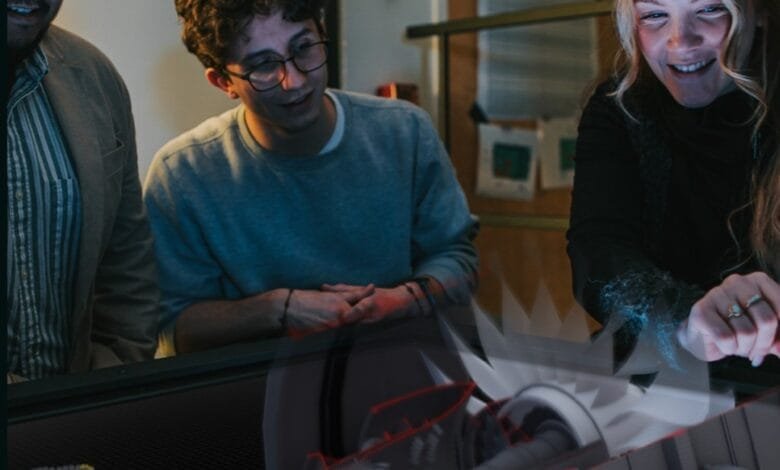Avalon Holographics Unveils Novac: True Holographic Display

▼ Summary
– Avalon Holographics launched Novac, the first commercially available true holographic table display, enabling group visualization of 3D content without glasses or headsets.
– Novac allows multiple users to view holograms from different angles in real-time, enhancing collaboration in fields like defense, medicine, and manufacturing.
– The display integrates AI, digital twins, and supports industry-standard file formats, making it versatile for high-stakes decision-making and immersive experiences.
– Avalon Holographics, backed by 61 patents and $65M in funding, aims to expand into OLED-based tiles for larger, more affordable holographic displays in the future.
– The company is raising additional funds to improve Novac’s successor, targeting applications in theme parks, esports, and digital twin environments.
Avalon Holographics has introduced Novac, a groundbreaking holographic table display that transforms how teams interact with 3D data. Unlike conventional stereoscopic systems that require headsets or tracking devices, Novac delivers true holographic visuals, allowing multiple users to walk around and examine digital objects from different angles simultaneously. This innovation eliminates the discomfort often associated with VR while enabling deeper collaboration in fields like defense, medicine, and manufacturing.
The glasses-free technology leverages AI and digital twins, making it ideal for high-stakes decision-making. Military commanders, surgeons, and industrial planners can simulate scenarios, assess risks, and refine strategies in real time. Wally Haas, president of Avalon Holographics, emphasizes that Novac bridges the gap between complex data and intuitive visualization, ensuring critical details aren’t overlooked.
Already adopted by defense contractors, Novac excels in mission planning and situational awareness. Its compatibility with Nvidia RTX GPUs, Unreal Engine, and Unity ensures seamless integration into existing workflows. The system supports industry-standard formats like OBJ, FBX, and DICOM, making it versatile for applications ranging from medical imaging to urban planning.
Avalon’s roadmap includes an ambitious shift from projector-based to OLED tile panels, which will enable larger, more affordable displays for theme parks, retail, and esports. With 61 patents secured and $65 million in funding, the company is poised to dominate the holographics market, projected to grow by 25-40% in the next five years.
Novac’s current iteration features a 40-inch display with 4.5 billion active pixels, processing five terabits of data per second. Though the hardware is hefty—weighing nearly 1,000 pounds—future iterations promise a tenfold performance boost at a fraction of the cost. Haas envisions widespread adoption within a decade, with potential uses in digital twins, immersive entertainment, and even holographic gaming.
During a demo, Haas showcased Novac’s ability to render light fields indistinguishable from real objects. Users could peer around digital models of parking lots or MRI scans, confirming true spatial depth. A playful holographic Asteroids game further demonstrated the system’s potential beyond professional applications.
With additional funding, Avalon aims to refine its technology, bringing wall-sized holographic displays to market. As Haas puts it, “The Star Trek Holodeck is the vision—this is just the beginning.”
(Source: VentureBeat)


